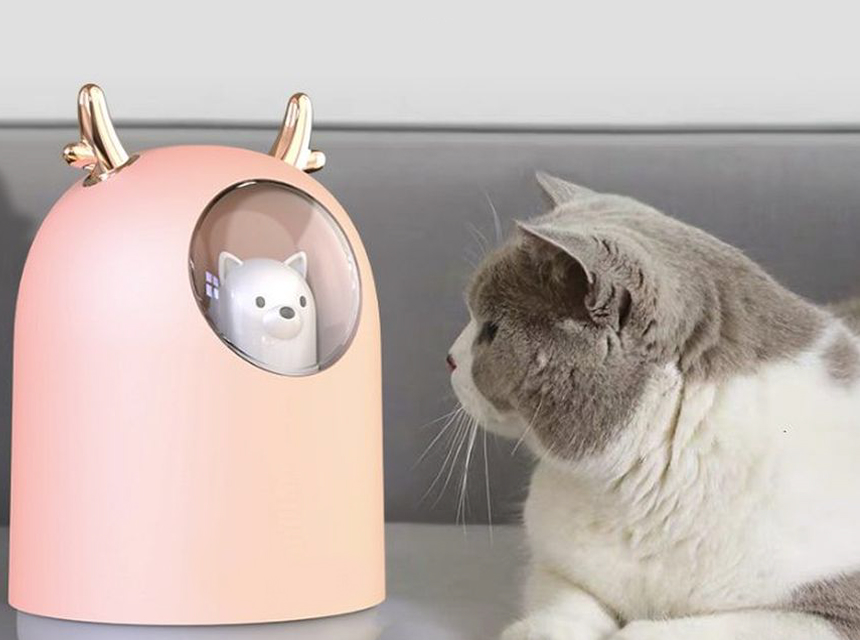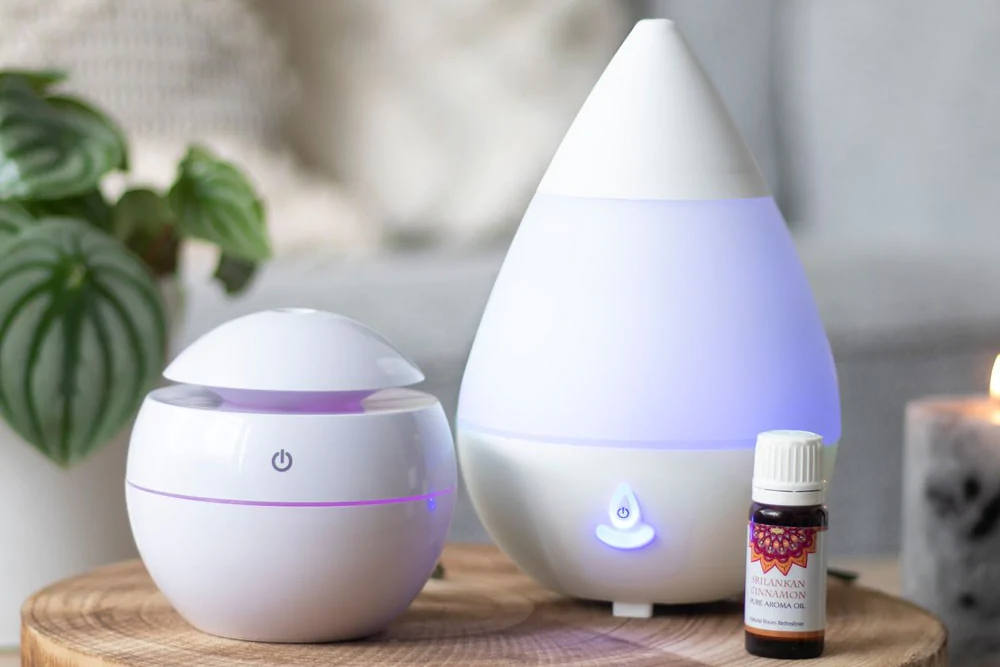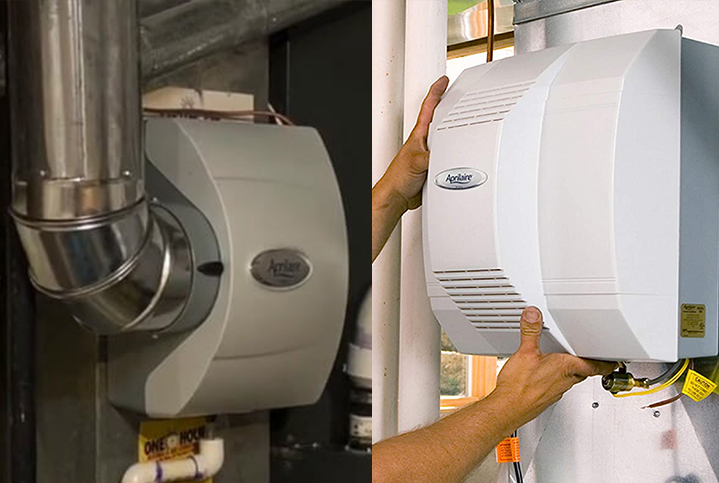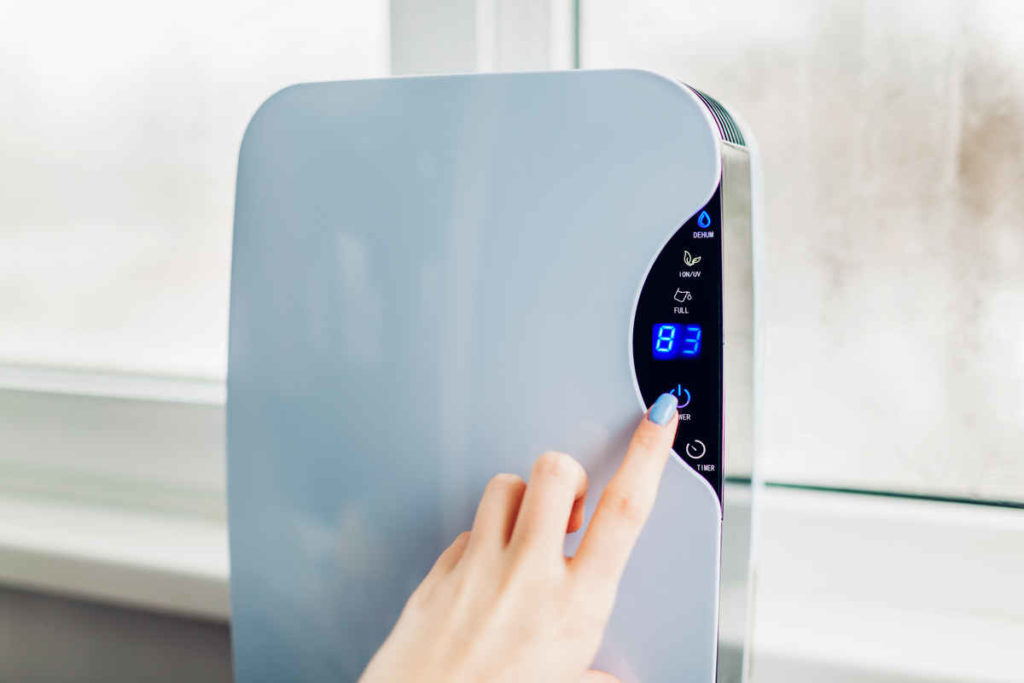

Somewhere along your journey towards finding the perfect humidifier for your house, you may have come across cool mist and warm mist humidifiers. The two are different in terms of operation and design, but just as efficient when it comes to humidifying your home.
So, which one should you choose between cool mist vs. warm mist humidifiers? If you’re looking for a one-line answer, here it is: cool-mist humidifiers are great for large spaces and homes with kids, while warm-mist humidifiers are the best choice for those with sensitive respiratory issues for spaces where noise is a problem, such as bedrooms. More specifically, consider these top Air Innovations humidifiers from arguably the best manufacturer in the market.
However, as you might expect, the issue is more complicated than that. The many differences between warm and cool mist humidifiers, meaning that it’s best to carefully take into account your particular needs when making a decision.
A cool-mist humidifier is one that produces vapors from unheated water, thus the name. The stream of vapor comes out at room temperature, which is good so long as the room is adequately heated.
There are two main types of cool-mist humidifiers, but how do they manage to vaporize water without heat? There are two ways how they do it.
There are two types of technology used in cool-mist humidifiers:
Evaporative humidifiers have a fan and a rotating drum wrapped in a wicking material. The drum is partially inserted into a water reservoir, where it absorbs water and filters it in the process. Above the drum, a rotating fan creates negative air pressure to draw dry air inside to flow over the top part of the drum and evaporate the water. The wet air is then sucked in by the fan and pushed outside.
On the other hand, ultrasonic models make use of a rapidly vibrating diaphragm which atomizes water molecules with barely any sound at all. The resultant invisible microdroplets of air are released throughout the environment, which gives these models an advantage when it comes to noise levels.
You need cool-mist humidifiers when:
Both evaporative and ultrasonic humidifiers share the same advantages and disadvantages, with one important difference.
Evaporative humidifiers rely on a fan to circulate the air over a wick, but the fan can become noisy. Think about a sound level akin to a whisper or a quiet conversation, which may not necessarily be a big problem. On the other hand, ultrasonic humidifiers are completely silent.
Another important point of difference is that evaporative models do filter out some minerals and particulate matter, but ultrasonic models vaporize everything. It is a good idea to fill any kind of cool mist humidifier with distilled or purified water for health reasons.
A warm-mist humidifier emits hot steam, which means they can even raise the ambient temperature slightly but perceptibly.
Warm-mist humidifiers use an internal heating element to vaporize water, then emit the steam into the room’s atmosphere. The boiling water creates its own internal pressure for the dispersal of the steam, so no fan is needed.
One important attribute of warm-mist humidifiers is that the boiling process eliminates almost all minerals, particles, and bacteria in the water, which makes them a very healthy option for those with sensitive respiratory issues.
A model such as this Vicks warm mist humidifier produces steam that is free from 95% of common bacteria, besides having a medicine cup for vaporizing medicine for coughs and the flu.
The heating technology of warm-mist humidifiers means that they are useful in many situations.
Whether you buy a cool mist or warm mist humidifier is fully dependent on your unique circumstances. Given that they have such different designs, there is really no easy way to give one or the other a clear win.
It’s much better to compare humidifiers based on what is the intended purpose of different users. This comparison will help you judge between:
Moist air helps a lot with colds, sore throats, and dry skin, which is exactly what you want your baby to avoid. It helps to soothe the upper respiratory system and creates a more comfortable environment to encourage sleeping.
While both types of humidifiers can serve these purposes, cool mist humidifiers are highly recommended around babies because of their safety. However, you have to be especially religious with cleaning and disinfecting the humidifier to prevent mold and accumulation of bacteria in the water tank and filters.
If your family is going through a bout of colds and flu, any type of humidifier can help. The important thing is to increase the humidity level in your indoor air, which can fall lower than the recommended levels of 30% to 50% Trusted Source Solve Winter Home Moisture Problems — Winter Storm Information Every breath you exhale flings moisture into the air. Showers, cooking and houseplants all add humidity too. That humidity combined with cold windows and walls is a recipe for winter moisture problems, says Ken Hellevang, an agricultural engineer with the North Dakota State University Extension Service. www.ag.ndsu.edu humidity. Moist air soothes the upper respiratory system, so both cool and warm mist humidifiers are perfect for colds.
When the goal is simply to reduce dryness in the air to help maintain soft and supple skin, both cool and warm mist humidifiers can serve the purpose. However, a cool-mist model can feel better in the summer months, while a warm mist might feel cozier in the winter.
Those suffering from skin conditions such as eczema should get a cool-mist humidifier because a warm-mist humidifier can aggravate the condition.
Cool mist humidifiers are marginally better for coughs because the cool mist helps to soothe the upper respiratory system by reducing dryness in the nose and throat. They may also help with congestion in the nose and chest area.
Warm mist humidifiers are healthier than cool-mist humidifiers, which makes them an attractive option for those with allergies. The warm mist also tends to soothe the sinuses and thin out mucus secretions. For those who find it easier to breathe in a sauna, then a warm-mist humidifier is a perfect option. However, those with asthma might prefer a cool-mist option.
Even with these differences, there is a lot that cool-mist humidifiers have in common with warm-mist humidifiers.
Here is a table summing up the different applications of both cool-mist and warm-mist humidifiers.
| Cool-mist humidifier | Warm-mist humidifier | |
| Functions and uses | ● Perfect for large spaces
● Preferred in homes with babies or pets for their superior safety features |
● Warm-mist humidifiers are healthier than cool-mist models
● The warmer mist emitted feels cozier in places with especially chilly winters |
| Versatility | They are perfect for almost any home so long as they are properly maintained | These humidifiers shouldn’t be used in homes with young children or pets. They also have a high energy consumption, which could be a factor |
| Durability | Theoretically, cool-mist humidifiers are more durable because there is no boiling involved. They can also be left on so long as they have an automatic OFF feature | Boiling leaves behind a buildup of mineral and particulate matter. Unless cleared regularly, this build-up can affect the service life of warm-mist humidifiers |
| Price | Cool mist humidifiers are slightly cheaper, but this varies from brand to brand | High-end warm-mist humidifiers are more expensive due to the higher quality and safety standards involved |
By now, you should be able to tell which type of humidifier will best suit your home. The next problem is to choose which model to buy, but we have that covered. We have detailed reviews for the best warm-mist humidifiers and the best cool-mist humidifiers to help you make your choice.
So long as you get a model with a good quality rating and make sure to clean it regularly, you should be fine.
Dry air can wreak havoc in your home, especially in the winter. Your family members might start to suffer from respiratory problems such as sore throats, coughs, colds, and allergies, while the dry air sucks the moisture right out of the skin. It even dries up wood in the furniture and building, causing creaks and cracks where there were none before.
A good humidifier, regardless of whether it is a cool-mist or warm-mist model, will go a long way to solve these problems. We hope that this article has been instructive and that you can now go out and buy a humidifier for your home.





